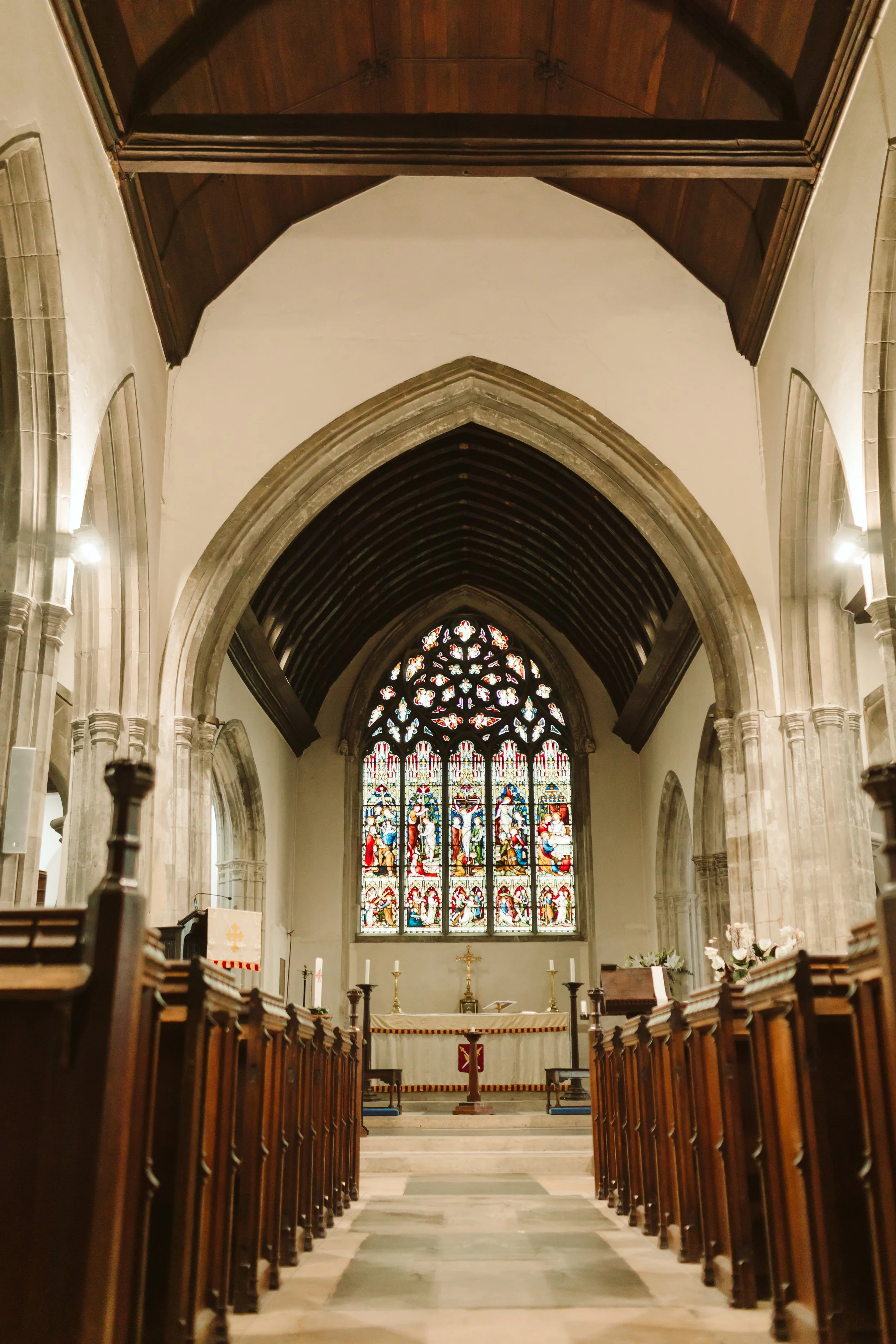History
Medieval Origins
There was almost certainly a Saxon church on this site, though the present church dates back to the 13th century. The pointed arch at the base of the tower is one of the oldest parts of the building.
The church was rebuilt around 1400, and the lofty chancel arch and the tall pointed arches in the nave date from this period. Most of the windows were added later, including the East window which dates from the middle of the 19th century and was designed by G. G. Scott.
In 1445 King Henry VI started his great work of building King’s College. The Church of St. John Zachary, that was used by both Trinity Hall and Clare Hall (now Clare College), was on the site of the new College and was demolished.
In recompense, the King made over the living of the Church of St. Edward to the Master and Fellows of Trinity Hall in perpetuity, and they still appoint and install its vicar-chaplain today. By 1446 the North and South chapels had been built, the former used by Trinity Hall and the latter by Clare Hall. They contribute much to the spacious appearance of the church today.
The Reformation
St Edward’s church played a unique role in the early days of the Reformation. A group of evangelicals in Cambridge, of whom Thomas Bilney was the first, had been meeting regularly in the early 1520s. They were influenced by a fresh translation of the New Testament by Erasmus and by the ideas of Luther, and believed passionately in the forgiveness of sins through faith in Jesus Christ.
At the Christmas Midnight Mass here in I 525, Robert Barnes preached what is thought to be the first openly evangelical sermon to be preached in any church in the country, proclaiming the Christian Gospel and accusing the Church of its heresies. This event has led to St Edward’s often being called ‘the cradle of the Reformation’ in England.
Other reformers preached regularly at St Edward's, including Hugh Latimer until he left Cambridge in 1531. Some of his sermons preached here have been preserved and the pulpit from which the reformers preached is still in use today.
Barnes and Latimer were all put to death for their beliefs. As he comforted Nicholas Ridley at the stake in Oxford, Latimer said 'Be of good comfort, Master Ridley, and play the man. We shall this day light such a candle, by God's grace, in England, as I trust shall never be put out’.
Today at St Edward’s we continue in the tradition of proclaiming the Gospel of Christ in the firm hope that its light will burn brightly in Cambridge, England, and across the world.
Edward, King & Martyr (c. 962-978)
Edward was born c.962 and was king of England from c.975 until he was murdered on 18 March 978. He was the eldest son of king Edgar the Peaceful but was not his father’s acknowledged heir. On Edgar’s death, the leadership of the kingdom was contested, with some supporting Edward’s claim to be king and others supporting his much younger, half brother Æthelred (known as ‘the Unready’), who was recognised as a legitimate son of Edgar.
Notwithstanding, Edward was chosen as king and was crowned by his main clerical supporters, the archbishops Dunstan and Oswald of Worcester. The great nobles of the kingdom, ealdormen Ælfhere and Æthelwine, quarrelled and civil war almost broke out. In the so-called anti-monastic reaction, the nobles took advantage of Edward’s weakness and to dispossess the Benedictine reformed monasteries of their lands and other properties that king Edgar had granted them.
Edward’s short reign was brought to an end by his murder at Corf Castle on 18 March 978 in circumstances that are not altogether clear. His body was reburied with great ceremony at Shaftesbury Abbey early in 979. In 1001, Edward's remains were moved to a more prominent place in the abbey, probably with the blessing of his half brother, king Æthelred. Edward was already reckoned a saint by this time. A number of lives of Edward were written in the century following his death in which he was portrayed as a martyr, generally seen as victim of the queen Dowager Ælfthryth, mother of Æthelred. He is recognised today as a saint in the Eastern Orthodox churches, the Roman Catholic Church, and the Anglican Communion.


